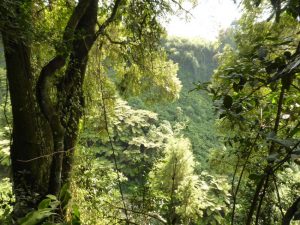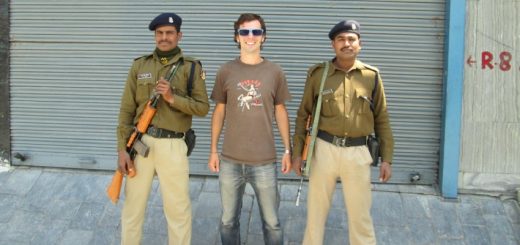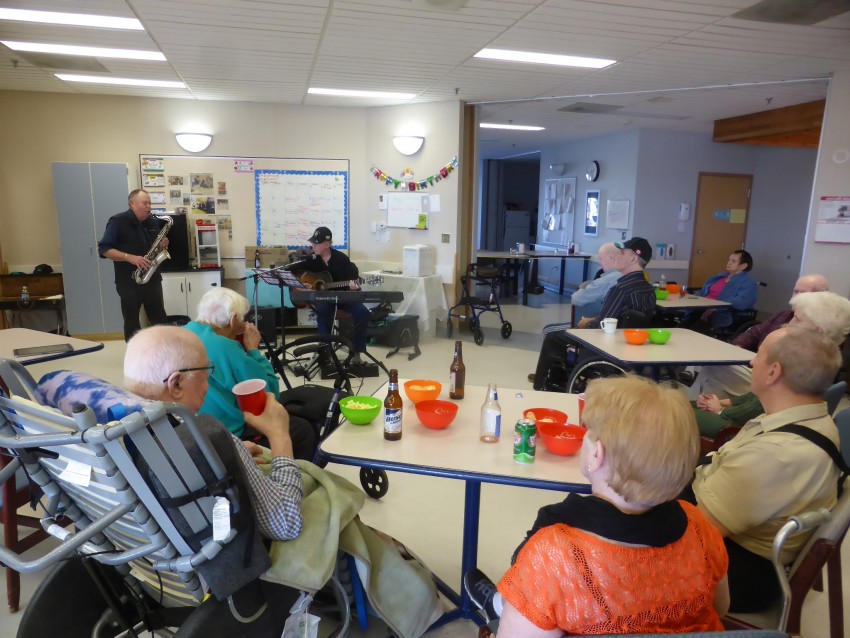Meeting a Silverback Gorilla Family, Rwanda
Meeting a Wild Silverback Gorilla Family
Volcanoes National Park, Rwanda.
Feb 7
Life comes at a price…
Sometimes emotionally.
Sometimes physically.
Sometimes mentally.
Sometimes monetarily…
Today was a special day where I went to spend an hour with a silverback gorilla family in the mountains of Rwanda. It was a $750 US price tag for such an experience. But what I got for that hour today was pretty freaking amazing!
I took this information from a photo at the Dian Fossey Gorilla Fund International:
Silverback Gorilla Families in the Volcanoes National Park
The Sabyinyo group frequently inhabits the closest territory to the park’s edge, between Mount Sabyinyo, from which the group takes its name, and Mount Gahinga. They can usually be reached within a two-hour walk. The group is lead by Guhonda, the largest silverback gorilla measured to date, at 220kg.
The Amahoro, meaning Peaceful, is lead by Ubumwe, who lives up to his name. There is a steep climb to reach the tranquil Amahoro group, however the climb is well worth it once in contact with this tranquil group.
Umubano Group lead by Charles the Silverback who took part of the Amahoro group to create its own when he matured into the same rank as Ubumwe. The two Silverbacks have met since, but Ubumwe seems to respect Charles and the two groups live peacefully alongside. Indeed, Umubano means “Live Together.”
The Susa group is currently the largest group of gorillas in the world and the one originally studied by Dr. Dian Fossey. In this group you will also find the oldest known habituated gorilla, Poppy, who was born in 1976. The group takes its name from the Susa River which has its source in the Virunga mountains.
The Kwitonda group includes three Silverbacks. This group came across to Rwanda from Uganda and the DRC to establish itself on the slopes of Mount Muhabura.
The Agashya group was named after it’s commanding Silverback, who‘s name means “the News”. Agashya’s take- over was unprecedented: he won the group over by first studying the former leader, Nyakarima and then challenging him. Agashya group is known to spend most of its time on the forested saddle between Mount Sabyinyo and Mount Gahinga.
The Hirwa group is an emerging group of members from the other groups. It is the newest group, residing mainly on the foothills of Mount Sabyinyo on the Gahinga side. It’s name means “Lucky one”.
I caught a 06:00 motorcycle ride to the park and ended up in a group with seven others because they had room in their car for me. That group and I would be visiting the ‘Hirwa’ silverback gorilla family group…
[su_note note_color=”#b0b1b6″ text_color=”#030303″ radius=”10″]
Here are some gorilla facts:
– 1902 was the year that mountain gorillas were first known to the world outside. There had been rumors of such creatures for about 30 years, but in 1902 mountain gorillas were confirmed when a German man shot two of them and sent them to Europe to be analyzed.
– From birth until about 3.5 years of age, baby gorillas stay very close to their mothers.
– From 4-6 years of age, during their teenage age years, gorillas begin to become independent. This is when they begin to separate from their mothers some and want to learn from their fathers instead.
– The 8-12 year old male gorillas are the trouble makers in the jungle. They are young and immature adults.
– As male gorillas begin to age and mature, the hair on their backs begins to change from black to sliver, which indicates distinction to other gorillas.
– In a family, the #1 is the king silverback gorilla. He breeds most of the females. His #2 and #3 are jealous of his situation. When a fight is taking place between the #1 male gorilla of a family and another silverback gorilla from a different family, the #3 helps the #1 fight, while the #2 stays with the family to keep everything on order and to take care of the females during this time. The #2 remains with the hidden females during a fight because the females like to see what is happening and who the stronger silverback gorilla may be. Without #2 to keep everything in order, females may use this opportunity to change families in order to be with a stronger alpha-male.
– Should any male other than the #1 in the family want any encounter with a female, it will have to be a secret arrangement between her and him away from the alpha male. If a cheat occurs, it is because a male and a female have snuck off together to have an affair.
– Nearly all females mate, but only a small percentage of males have the opportunity to do so.
– There are four sets of gorilla twins in the National Volcanoes Park. They are rare. Eight sets have been born, but it is difficult for a mother to care for two babies at the same time.
– Gorillas do not drink water, but take it in through the plants they eat. Gorillas can eat 15% of their body weight, and 30kg of plants can produce 17L of water.[/su_note]
The Hirwa group we visited is a relatively new family that began in 2003. The alpha male of the group, Muninia, was a #4 or a #5 in the Susa group. Our guide described Muninia as a “good cheater,” who did not want to deal with punishments anymore from the alpha male and decided to leave the family. When he left the Susa group, he encountered five other gorilla families where he fought and took one female from each of those groups to begin his own family. Muninia, now 30, is the 4th biggest silverback gorilla in the jungle.
- Our mountain gorilla seeking protector. Scary.
- Massive ferns.
The headquarters of the Rwanda Development Board on the edge of the Volcanoes National Park is at 2,300 meters above sea-level. We had to drive into the forest and then climb to 2,800 meters to find our silverback gorilla family. I was with a group of older retired Americans and it was a one hour hike up the mountain.
One of the retired ladies had her daughter with her who was about 40 years old and in terrible shape. In no condition to be climbing and volcano mountain, the woman was vomiting on the way up the mountain, sweating, and had to have two porters on each side of her to help her up on the way up. She looked to be having an unpleasant time in our gorilla quest, but I admired her determination. I guess $750 will determine a lot… However, one hour became two…
[su_note note_color=”#b0b1b6″ text_color=”#030303″ radius=”10″]
We were told by our guide:
– Try to stay 7m from the gorillas (which we would soon find out could not be further from the truth).
– Eye contact with the gorillas is no problem at all, but do not point at them as it will seem to the gorillas like you want something.
– The gorilla children may touch you, but do not touch them back. You touching them back may make their mothers think that you are attempting to steal them.
– The gorillas may kick you. No kicking back.
– When the alpha male silverback gorilla is around, you must bow down and submit in front of him. Not submitting will make him think that you could be a challenger.
– Never run from the gorillas. They may mistake this for a game.
– You must try to speak a language like the gorillas. The sound of clearing one’s throat in a low voice is asking for permission. The sound of a coughing is saying ‘no!’[/su_note]
*On the way to our silverback gorilla family, we walked across a fire-ant hill. I had not noticed at first, but I would notice my error in stepping on their home soon enough. I now fully understand the expression ‘Ants in Your Pants.’ It took me at least 10 minutes of dancing and slapping to get all of them out.
- Walking sticks kick ass.
- This was the terrain to get to the mountain gorillas.
I found gorilla feces on a path. I pointed it out to our guide and was the first to discover it. He told me I am now officially an expert silverback gorilla tracker. My gorilla-shit tracking skills turned out to be up to snuff as we came upon Muninia’s family of gorillas soon after. A very young gorilla noticed us and came to entertain our whole group that was finishing the climb to a section where the Hirwa family was enjoying the day. It was pretty amazing to see these nearly-human black balls of fur. Bring a gorilla looks like it is a pretty good life. It means for a lot of eating, a lot of sleeping, and a lot of wrestling with your half-siblings all day long.
Gorillas actually beat their chests like they do in the movies and in children’s imaginations.
[su_quote]Beating their chests is the gorilla way of showing how domination and strength. Even the two-year old child gorilla would beat his chest and beat the ground to show that he was tough…[/su_quote]
- First sighting. A little gorilla who had ventured off a little further than the rest of the family.
- Yea, I know, totally awesome!
- I like that look.
- ‘I don’t know, what do you think?’
[su_pullquote]Gorillas are very gassy creatures. There is no gorilla shame in being extremely gassy, or being smelly![/su_pullquote]Muninia, the chief of the family, lazes about while everyone else burns energy wrestling and causing mischief. The teenagers, as our guide explained, are truly troublemakers. They like to test the behavior of each other and of us humans. As they walk past they might grab your leg or kick you. I had my leg slapped and another gorilla pulled on my pants. They know that no matter what happens, they will not get in too much trouble because daddy will take care of business should there be consequences. The teenage gorillas reminded me of when I was in my early 20’s in bars with Warren, my big and very strong friend. I knew I could really push limits because no matter what, Warren had my back and would take care of any trouble for me. The gorillas have Muninia to do the same. Our behaviors are not so different.
Near the end of our one hour $750 per person per hour visit, Muninia had moved to the area where us humans and most of his family were hanging out together. Muninia decided to have a nap in our presence. I asked our guide if he would take me to the females where I could see the two gorilla babies. As we went to move in the direction of the females an adolescent gorilla, who would be about a 10 year old boy, got in our way and blocked the path towards the females which was behind his daddy’s sleeping back. He was protective. Even though he was small, and there were several of us humans, he knew this his body position would stop us from moving past him. Amazing creatures….
Here are a few photos of the amazing day with Muninia’s silverback gorilla family and a video to follow. Below is a gallery with the rest of the photos.
- Grab a female, throw her down, clean some bugs off of her.
- Sleepy Muninia.
- So great.
- Even the king of the gorilla family gets itchy nuts sometimes.
- Looking for mischief.
- Muninia, coming to the area of his family to see what we are all doing and then have a nap.
- Great face.
- It would be fun to be a part of that wrestling match in the background.
- We had to submit to him and bow down to him so that he did not see us as a threat. It is incredible how that works.
- Muninia and I.
We humans are very curious about the gorillas, but it sure would be nice to know how they feel about us. And why do they even care to be tolerant of us. For an hour a day creatures that resemble them arrive in strange colored fur, stare at them during that time and then leave again…every single day. I would like to know what sense the gorillas make of such weird nonsense…
Here is the entire photo gallery below…
- Check out that fancy walkin’ stick!
- Volcanoes National Park.
- Our mountain gorilla seeking protector. Scary.
- Massive ferns.
- Walking sticks kick ass.
- This was the terrain to get to the mountain gorillas.
- First sighting. A little gorilla who had ventured off a little further than the rest of the family.
- Yea, I know, totally awesome!
- I believe he was two and a half years old.
- Muninia, the Silverback king of the Hirwa family.
- Yea, that is close to a massive gorilla.
- Grab a female, throw her down, clean some bugs off of her.
- Muninia charming one of his girls.
- ‘I don’t know, what do you think?’
- The Hirwa mountain gorilla family.
- Yea, we were close.
- Sleepy Muninia.
- I like that look.
- They were all over our personal space, as we were actually in theirs.
- ‘Hey.’
- What an hour.
- So great.
- Even the king of the gorilla family gets itchy nuts sometimes.
- There were a lot of them.
- Relaxin’ and scratchin’.
- Covered in leaves from gorilla-ing around.
- Looking for mischief.
- It would be fun to be a part of that wrestling match in the background.
- They move fast.
- Muninia, coming to the area of his family to see what we are all doing and then have a nap.
- We had to submit to him and bow down to him so that he did not see us as a threat. It is incredible how that works.
- Muninia, the alpha-male Silverback Mountain Gorilla.
- Family.
- Very social animals.
- That is a big boy.
- Great face.
- The young one on the left, taking care of daddy and blocking our path to the females with their infants.
- Muninia and I.
- The thickness of the jungle.
- Off the volcano after a fascinating hour.
























































My dream is to experience this. It looked amazing.
What an amazing experience you had! Thanks for sharing.
Thanks Jaynie! Thanks for reading!
Incredible experience! Well done you for holding your nerve. We all need a Muninia from time to time 🙂
It was just so fascinating Angela. We were all so enthralled that no one could really feel their nerves! 🙂
Thanks for coming over to read! I really appreciate that!
Very nice trip report and insight to the experience. Thanks so much for sharing.
Thanks for coming over to have a look and a read Christine! 🙂
Looks incredible! Such gorgeous animals 🙂
Thanks Laura! So gorgeous indeed!…
What tour outfitter did you go with? Planning a trip there next month and hoping to see the gorillas.
Kylea,
I went through the Rwanda Development Board of tourism. I think they are the only way to do it, and if they are not the only way, I think they should be the only way you should do it yourself because any tour company will have to go through them too and then they will middle man you to tack on extra fees! You can buy your permit about 48 hours ahead of the day as they are not as crazy busy as advertised!
Thanks for reading,
Beaver
Gorillas are so fascinating to simply watch.